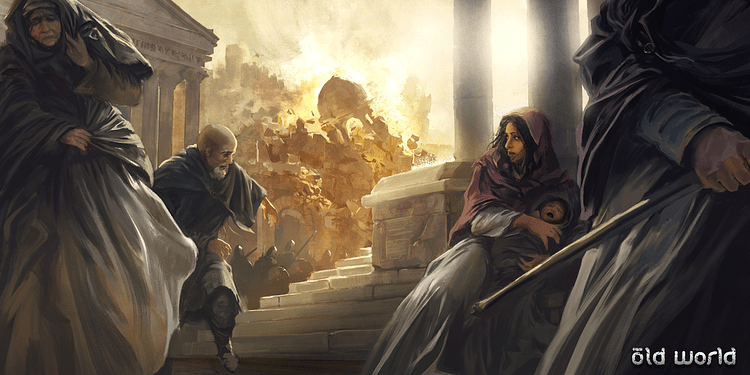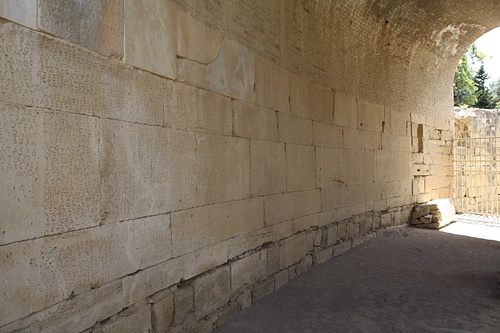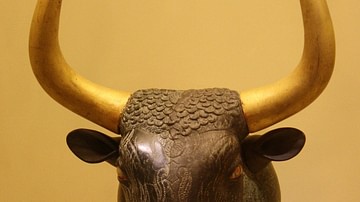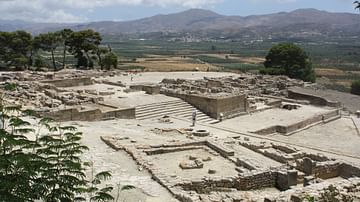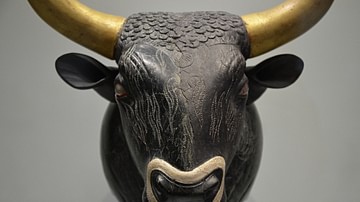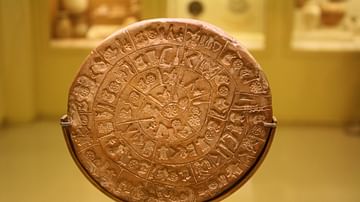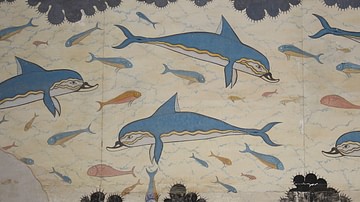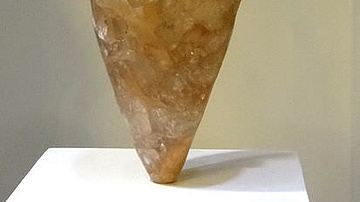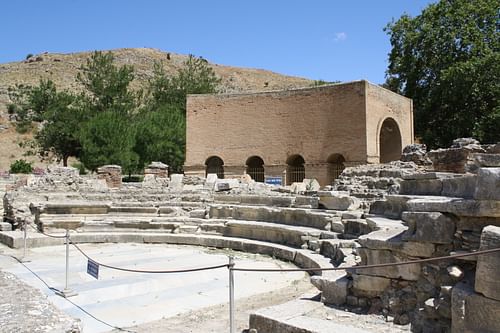
Gortyn is located on the Mesara plain of central Crete and was an important settlement throughout antiquity from the Minoan to Hellenistic periods. In Roman times the city went on to gain even more importance as the capital of the Roman province of Crete and Cyrene. The site today is particularly noted for the Gortyn Law Code, a lengthy wall inscription created in the 5th century BCE which is the earliest such example in Europe.
Bronze Age Gortyn
First settled in the Late Bronze Age, Gortyn was built on an acropolis and initially controlled by the Minoan palace of nearby Phaistos until it rose to prominence as the most important city-state in the region. Bronze Age Gortyn is also the setting of several important stories from Greek mythology. Europa was seduced here by Zeus when he took the form of a bull; their marriage taking place under an evergreen tree at the site. Gortyn is mentioned in Homer's Iliad as being a walled city and in the Odyssey where the Greeks, returning home from the Trojan War, are driven against the stormy coastline of southern Crete.
The Archaic Period
In the 8th and 7th centuries BCE the city spread onto the plain near the Mylopotomos River. It was served by several nearby harbours, notably Matala and Lebena. The city acquired the usual agora, monumental sculpture and religious temples of a prosperous Greek polis or city-state. Two of the city's most important temples were dedicated to Apollo and Athena, the latter being regarded as the guardian of the city.
The Classical Period & Law Code
Gortyn continued to flourish and created its own coinage from 470 BCE. Unfortunately, there are few remains of buildings from this period but there is one truly unique survivor. This is the famous Gortyn Law Code, which dates to c. 450 BCE. Inscribed on a curved porticus wall of marble blocks on the edge of the agora, this huge text spans 8 metres. It is divided into 12 columns and is in boustrophedon, that is alternate lines are read in opposite directions. The 600-line text, using the Doric alphabet and dialect, is almost complete and was clearly meant to be read by any member of the public. The Code describes articles of property and marital law, and is of special interest to historians for its details on the family and women's status. Also covered are rules concerning inheritance, debts, adoption, marriage, slavery, and sexual violence. It is the earliest surviving legal inscription from anywhere in Europe. Following the destruction of the supporting wall, the Code was actually dismantled and reassembled in the 1st century BCE. It was re-set in its original position although the communal space now functioned as a bouleuterion or meeting place for the city's council.
The Hellenistic Period
Gortyn continued to prosper in the Hellenistic period and, in the 3rd century BCE, it led a confederation of Cretan city-states against Knossos. Other indicators of Gortyn's increase in status included construction of an extra agora and a sanctuary to Demeter and Kore. With the support of Ptolemy IV Philopater of Egypt, Gortyn felt confident enough to take on rival Cretan powers such as Knossos and Phaistos in the Cretan Wars. Gortyn defeated Phaistos in the 2nd century BCE and then sided with old enemy Knossos to defeat Lyttos in c. 220 BCE.
The Roman Period
Rome began to take an interest in Cretan affairs in the 2nd century BCE, but Gortyn made the strategic error of giving sanctuary to Rome's great enemy Hannibal in 189 BCE. Then, switching policy and supporting Quintus Caecilius Metellus during his brutal invasion of Crete in the mid-1st century BCE, Gortyn seized the opportunity to increase its own power on the island and grow to an unprecedented size. The strategy worked as c. 27 BCE Augustus made Gortyn the capital of the Roman province Crete and Cyrene (in modern Libya).
Made the seat of the proconsul, the city also benefitted from a new complex for this purpose, the praetorium. Continuing to prosper in the following centuries the population grew to 300,000 and the city benefitted from Roman baths, theatres, a stadium, arena, odeion, and circus, as well as a much improved water system which included fountains, cisterns and aqueducts. A further indicator of Gortyn's status in the Roman world was the stationing of such prominent figures as future emperor Trajan, who served as the island's quaestor in 81 CE.